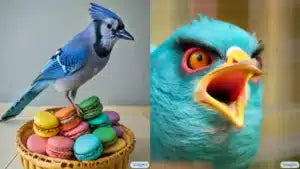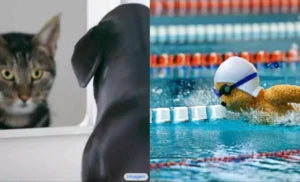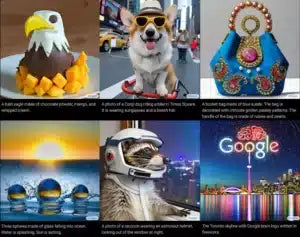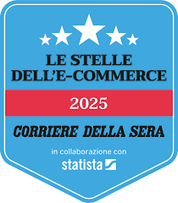Google Imagen is the new Artificial Intelligence, a project halfway between exciting and worrying Find out more
You write the text, even a complex one, and Google Imagen creates the corresponding image. No, we are not talking about a children's game with preset shapes, nor about a  something that comes from a science fiction film.
something that comes from a science fiction film.
We are talking about something absolutely real, already functioning, even if with limited access and about which you can find a lot of information and details on the Internet.
What Google Imagen does
The latest and most advanced AI (Artificial Intelligence) among those produced by the big names in technology, Google Imagen is an advanced system that takes a text entered by the user and transforms it into a color image, detailed and impressive in terms of quality and of the fantasy of realization.
But let's start from further afield, what does AI mean for text-to-image?
Text-to-Image
The lack of imagination is a constant in a good portion of the population, a lack that Google, but also Microsoft and many others have tried to compensate for through the massive use of artificial intelligence.
Text-To-Image AI deals with the generation of complex images starting from text typed by the user.
Attention, not a simple text like “apple”, “car” or “person on a bike”, but much more complex texts, like those whose generated images caused a sensation on the Internet:
 And many others, which have now become a standard, so much so that they have become the typical test to verify the quality and mastery of AI systems.
And many others, which have now become a standard, so much so that they have become the typical test to verify the quality and mastery of AI systems.
Something exciting, but at the same time also very worrying and risky, as the journalist and science communicator Celia Guimaraes brilliantly explains:
“Imagen” uses artificial intelligence for surprising text-to-image results, which however has significant ethical implications, so much so that the company itself has not made it available to the public
Celia Guimaraes
Google Imagen and its brothers are therefore systems that allow you to start from a set of meaningful words, which are processed by the Machine Learning system and shown in a work that can be created in various pictorial and drawing styles (from oil to charcoal, from sketch to cubism).
The Google proposal
The Mountain View giant could not fail to also follow this trend of artificial intelligence.
The result of this study that combines Machine Learning, processing capabilities and machine learning is Google Imagen , a technology that amazes, convinces and worries at the same time.
It amazes 
The result is truly very realistic and is achieved through a myriad of styles, combinations and colors that actually leaves you speechless.
Convinces
We are talking about a quality, beautiful and valuable result, for a product which, if opened to the public, could truly revolutionize the graphics and editing sector.
It's worrying
The reason why this product is also in beta reserved for a few select users is very clear. There are mainly two concerns:
 Next steps
Next steps
According to the team that developed Google Imagen , called Google Brain, the potential of this technology is practically infinite.
Jeff Dean, responsible for Artificial Intelligence for this section, believes that a solution like Google Imagen could really help all the functions that require creativity and imagination in the graphics field.
What is therefore necessary to do is "only" to thoroughly test Artificial Intelligence, which at this moment can be considered like a brilliant child who however does not yet fully understand ethics and the rules of behavior.
An evolution that is already underway, thanks to a program based on selected beta testers, whose requests to Google Imagen are supervised by Google.
The Google Imagen Brain Team summarizes in an excellent sentence the reason why it is not yet open to the public:
“It relies on text encoders trained on raw web-scale data and therefore inherits the social biases and limitations of large language models. As a result, there is a risk that Imagen has encoded harmful stereotypes and representations, which explains our decision not to release Imagen for public use without further safeguards.”
Other risks
Other possible risks given by the implementation of Google Imagen affect, as in all improvements given by technologies, the impact that it could generate on the world of work.
From graphics studios to manga creators, there are many categories that could, at least in part, be replaced by Google Imagen .
Of course, this is progress and one way or another we cannot and must stop it, but there are many implications to evaluate before a possible public release.
The criticism 
Then there is another aspect that needs to be considered and which emerges in many forums and debates on the internet. To date, very few people have seen Google Imagen at work. Google Imagen's detractors, in some ways "exaggerated" but who rightly make logical sense, wonder if Google Imagen really generated the splendid images starting from the text or if some "human" corrected the descriptions of what was requested of Google Imagen based on what is generated by Artificial Intelligence.
Between doubts, certainties, amazement and concern, there are still many challenges awaiting Google Imagen.







